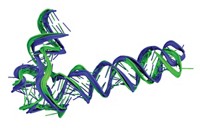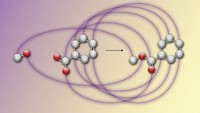Advertisement
Grab your lab coat. Let's get started
Welcome!
Welcome!
Create an account below to get 6 C&EN articles per month, receive newsletters and more - all free.
It seems this is your first time logging in online. Please enter the following information to continue.
As an ACS member you automatically get access to this site. All we need is few more details to create your reading experience.
Not you? Sign in with a different account.
Not you? Sign in with a different account.
ERROR 1
ERROR 1
ERROR 2
ERROR 2
ERROR 2
ERROR 2
ERROR 2
Password and Confirm password must match.
If you have an ACS member number, please enter it here so we can link this account to your membership. (optional)
ERROR 2
ACS values your privacy. By submitting your information, you are gaining access to C&EN and subscribing to our weekly newsletter. We use the information you provide to make your reading experience better, and we will never sell your data to third party members.
Computational Chemistry
Software makes hand-drawn chemical structures machine readable
Machine-learning tool recognizes molecules 3 times out of 4
by Sam Lemonick
March 12, 2021
| A version of this story appeared in
Volume 99, Issue 9
Software like ChemDraw lets chemists draw chemical structures on computers, but drawing them by hand on a piece of paper is easier much of the time. While those drawings are convenient, they can’t be easily transferred to a computer to use computational tools. So Todd J. Martínez of SLAC National Accelerator Laboratory and Stanford University and colleagues developed a machine-learning technique that can recognize hand-drawn hydrocarbon structures from pictures and convert them to the computer-readable SMILES (simplified molecular-input line-entry system) format (ChemRxiv 2021, DOI: 10.26434/chemrxiv.14156957.v1). Called ChemPix, the tool uses neural network algorithms adapted from image captioning software. In the group’s tests, ChemPix could correctly identify hand-drawn molecules from photographs about 85% of the time. Hayley Weir, a PhD student at Stanford who led the work, says the team deliberately trained and tested the software on blurry, low-quality images to mimic real-world use. ChemPix can recognize aromatic rings, double bonds, and assumed hydrogens, but the researchers foresee differences in handwriting complicating efforts to extend its abilities to heteroatoms.




Join the conversation
Contact the reporter
Submit a Letter to the Editor for publication
Engage with us on Twitter